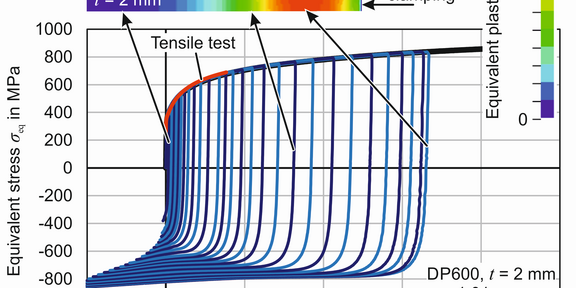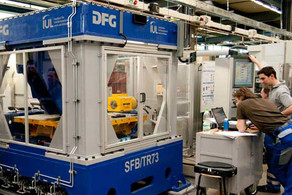Novel In-Plane Torsion Specimen for the Characterization of Damage and Hardening

Funding: German Research Foundation (DFG)
Project: 327544970
Contact: Dr.-Ing. Heinrich Traphöner
Status: Completed
One advantage of the in-plane torsion test is the efficient characterization of the kinematic hardening by evaluating the specimen at different radii.
For planar specimens, however, the strain that can be achieved before the reverse of load is limited by the influence of the inner clamping. Specimens with a groove achieve significantly higher strains, but can only be evaluated in a limited area of the groove. For this reason, a sample is developed that combines the advantages of both specimen shapes. The figure shows the numerical simulation of a groove which has been extended by a planar area. The equivalent strain decreases with increasing distance from the inner clamping. With this new specimen shape it is possible to characterize both very high pre-strains and very low pre-strains on a single specimen. The figure shows the cyclic stress-strain curves for a high-strength DP600 steel of 2 mm sheet thickness with pre-strains between 0 and 0.7, which was determined on a single specimen and with a single experiment.







![[Translate to English:] [Translate to English:]](/storages/iul-mb/_processed_/c/d/csm_Forschung3_2880x640_patrick_961587f317.png)